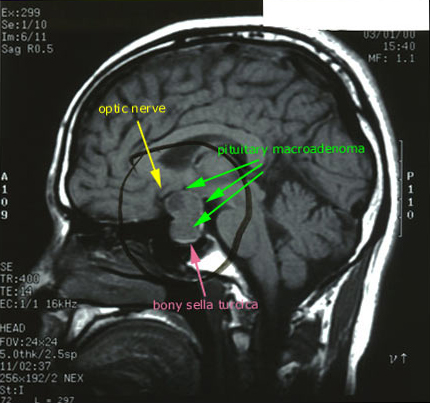| visit: www.infertilitytutorials.com |
|
MRI Pituitary Microadenoma View 03
This radiograph (of an MRI) demonstrates a pituitary macroadenoma (classic "snowman" appearance of the bi-lobed pituitary gland that is circled by a radiologist) on saggital view that extends outside of the bony sella turcica and is in very close approximation to the optic nerve. If the optic nerve is displaced by the pituitary tumor the patient often has visual problems. The classic visual disturbance with pituitary tumors is bitemporal hemianopsia (blindness in the temporal field of vision of both eyes). These larger tumors can also extend out of the bony sella turcica superiorly to obliterate the third ventricle (causing hydrocephalus), laterally into the cavernous sinuses (possibly encasing the carotid artery), posteriorly into the pontine or cerebellopontine angle cisterns, or inferiorly into the sphenoid sinus to potentially cause a variety of symptoms | |||||||||||||||

